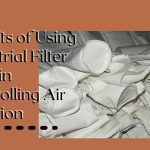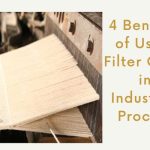Everything You Should Know about Filter Cloth
Customers frequently have enquiries about wet filtration, and as a leader in designed filtration, Micronics is more than delighted to address any of your concerns regarding filter fabric choice. Today, we’ll talk about one of the questions we’re asked the most: which filter cloth is essential for a productive and economical filter press operation?
Customers usually enquire about how the selection of filter cloth would affect their particular operation because they come from a diverse variety of industries. Perhaps, you are also considering this. Review the filter cloth fabric options available to you and the cutting-edge techniques that Micronics uses to manufacture filter cloth now. As you read, you might gain a better sense of the qualities you need to maximise the performance of your filter press, which will help us create a custom filter cloth that performs above and beyond your expectations.
Materials for Yarn Fiber, Filament Types and Yarn Designs
Our approach begins by looking at your particular application, after which we combine various yarn and fibre kinds with weave designs. Our years of experience in the textile industry have enabled us to create tailored suggestions for fibres and yarns for any use, from mining to producing chemicals. Sewing decisions, edge treatment, and feed necks are also crucial, as are yarn designs and weave patterns. Each of these factors helps to produce the ideal fabric for your purpose. Micronics works closely with you to produce the filter cloth that meets your needs—from particle retention to enhanced cake release to drier cakes to longer cloth life—from the ground up.
The Weaving Process and Weave Patterns
Standard and customised filter cloth are made largely thanks to the weaving process, which includes weave patterns. How the fabric is made ultimately determines everything. Multifilament or filament yarn yarns are first created by extruding synthetic polymers. After being twisted together, the filament bundles become yarn. The likelihood that the finished yard may retain particles throughout the filtration process decreases with the degree of filament twisting. The release of filter cakes from multifilament yarns is average due to their strong strength properties and average crystallite collection efficiency. Heavy extrusions with strong tensile strength and smooth finish create mono-filament yarns. Occasionally, fillers are added to modify them.
SAF Filter is a reliable company that provides premium quality filter cloth. For the best filter cloth, you can trust us. Get in touch with us to learn more about our products and services.




